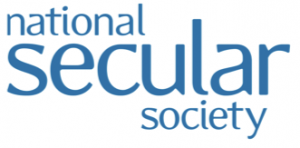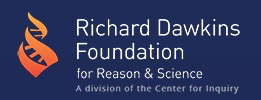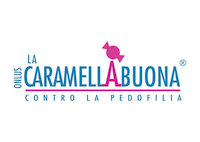TYPES OF THERAPY
By Louise Rooney MBACP AIP
If you are not accessing mental health services through your hospital or health service and you need to find out about counselling or therapy privately you might find it useful to understand what different types of therapy are out there for you to consider.
This list is not every possible type of therapy but shows some of the key ones. Some therapeutic ideas have been around for a very long time, some are newly evolving and more will follow. Importantly each is different and will appeal in different ways to individuals.
Survivors Voice does not advocate any one method of therapy or suggest that everyone should have this intervention. These pages are designed as a brief and informal guide only of some of the possible styles of therapy available.
ACCEPTANCE THERAPY
This kind of therapy is based on the idea that the more we try to get rid of painful thoughts, memories and the effects of distressful events, the more traumatic these become – almost as though they are made worse by doing this. Acceptance therapy is not about being defeated by or surrendering to dark feelings and thoughts, but is more about allowing them to be there and not resisting their reality.
ANGER MANAGEMENT
It may be that you feel that you are struggling to know how to deal with feelings of anger, sometimes perhaps even not knowing how to identify being angry and being frightened of it. Therapy that focuses on ways of working with anger might be good for you, whether you find that you are particularly aggressive or passive or repressing your angry feelings. There are many ways of dealing with anger in therapy – venting, alternative thinking, mindfulness, roots of evaluation. If you feel this is your area of concern, then speak to your selected professional about their model of choice and how they see anger.
ART THERAPY
This is a form of therapy that uses art as it’s main way of communicating and expressing ourselves. It does not matter if you are experienced in art or not, it is about finding a safe place to express your feelings and issues to an art psychotherapist in a safe and creative way. This is a specialized area of psychotherapy and so do go to someone who is qualified in both art and psychotherapy.
COGNITIVE BEHAVIOURAL THERAPY (CBT)
The idea behind CBT is that our emotions are fuelled by thoughts, sometimes automatic negative thoughts that have evolved over years of living and that subsequently the way we react to the world around us is affected. CBT looks to find a different way of thinking and new ‘tools’ that can help, the idea being that if ‘we keep doing what we do, we will keep getting what we get’. CBT is renowned as a modern form of therapy that is useful for panic, anxiety, depression, addiction, OCD, suicidal thoughts, eating disorders etc. This may be useful if you want to change your view on the world around you and find a new way of being.
CONFLICT RESOLUTION
This is a little like the acceptance therapy mentioned earlier but takes the idea that conflict with people, e.g. perpetrators or family, or inner conflict between your inner desires –v- your obligations leads to ongoing negative emotional states. In conflict resolution clients are helped to find win-win situations and to heal conflict by enhancing core skills. This may be useful for example if you are having to deal with unsupportive families or are struggling to find a way of pushing for what you would really like to do or be.
DANCE/MOVEMENT THERAPY
As with Art Therapy, Dance Movement Psychotherapy is the psychotherapeutic use of movement and dance through which a person can engage creatively in a process to further their emotional, cognitive, physical and social integration. It is founded on the principle that movement reflects an individual’s patterns of thinking and feeling.
DIALECTICAL BEHAVIOUR THERAPY
Interestingly recent research indicates that this particular therapy is useful for survivors of abuse, mainly because it is a mix of CBT, Acceptance and Mindfulness therapies. It has been used for people manifesting borderline personality disorder symptoms but this may be useful for people who like the idea of CBT and of adopting a more ‘mindful, observational’ stance on their life experience.
ECOTHERAPY –
Is about personal healing and doing this by nurturing and healing the earth around us. It’s main focus is on our connection with the environment, about the idea of integrating our inner and outer selves and uses the natural world as a way of communicating our feelings with a psychotherapist. This may be useful for clients who enjoy walking, outside activities, gardening etc. and can relate to how they feel through this media.
EMOTIONAL TRANSFORMATION THERAPY
Using light and eye movement techniques, ETT works to change negative emotions into positive ones – e.g. fear to courage, sadness to joy. It mixes therapy with an understanding of how the brain works and aims to offer a swift release from negative emotional and physical feelings, trauma recovery. This may be particularly useful if you feel a sense of being trapped in patterns of being that keep you unhappy, may also be very useful for people who are experiencing the pain of flashbacks and PTSD.
EQUINE AND ANIMAL ASSISTED THERAPY
Working with a psychotherapist and developing a relationship with a horse might be a useful way to explore how you react to ideas such as trust, compassion, communication, safety, self-care, nurturing, self-confidence etc. If you are particularly fond of animals, then using this kind of therapy may be more your preference. The idea is that clients will react and communicate how they are feeling and hopes using the relationship with the horse.
EXISTENTIAL PSYCHOTHERAPY
Using the basis of the human condition, and relying on precepts called human givens (such as freedom, responsibility, death, emotion, isolation, meaning etc.), this powerful deep therapy focuses on a client’s human experience. Focused less on the past but more on the present and choices that can be made in the future, this might be useful for people who want to engage in a practical, human-focused exploration of their existence and their world.
EMDR
Eye Movement Desensitisation and Reprocessing is a psychotherapeutic procedure that uses eye movement to explore traumatic or dysfunctional memories and experiences and their consequences. It works on the idea that it is possible to revisit traumatic events but dissociated from the feelings, more as an observer and without the ‘fight or flight’ feelings and stresses. This is a relatively new therapy but might be useful for people who are trying to cope with the effects of PTSD and flashbacks. Therapists need to undergo additional training to work in this way.
FAMILY THERAPY
Sometimes called Systemic Therapy, this is about looking at the dynamics and relationships in a family unit and finding a way of resolving conflict by open communication in a safe place with a therapist acting as a guide/observer.
FEMINIST THERAPY
With a foundation based on the idea that women have been disempowered through social stereotypes and structures, having an equal relationship with a specially trained therapist will help clients understand their own potential and take their power back, focusing on embracing a clients strengths and not their weaknesses.
GESTALT
This is an experiential therapy that is focused on the ‘whole’ client experience. Working with what is real and happening now as oppose to our interpretation of the world around us. It favours using techniques such as the ‘open chair’ where clients sit opposite an empty chair into which they can ‘put’ someone who has caused them pain, swopping chairs around to try to view from different perspectives.
GUIDED THERAPEUTIC IMAGERY
Using cues and imagery prompted by the therapist, clients can focus on challenges and difficulties in a more relaxed way. Using breathing and calming techniques, it is hoped that this therapy will promote emotion and physical well being and reduction in stress. This might be useful if you are having trouble accessing how you feel or facing difficult situations. For example, in illness a person may focus on healthy cells or themselves in wellness.
HUMAN GIVENS
At the core of this therapeutic idea is that human beings, like all organic beings, come into this world with a set of needs. If those needs are met appropriately, it is not possible to be mentally ill. Offering tailored solutions to people when specific areas of needs are identified, therapists help with advice, support, guided imagery etc.
HUMANISTIC
The main goals of humanistic psychology are to find out how individuals perceive themselves here and now and to recognise growth, self-direction and responsibilities. This method is optimistic and attempts to help individuals recognise their strengths by offering a non-judgemental, understanding experience.
HYPNOTHERAPY
Hypnotherapy uses hypnosis to induce a deep state of relaxation, during which our sub or unconscious minds are highly receptive to new perspectives and ideas. It is believed that our subconscious processes vast amounts of information, in fact storing something like 400 million details about our thoughts and feelings, including our more negatives ones. It is this area where hypnotherapy works looking at reprogramming those negative thoughts in the subconscious.
INTEGRATIVE THERAPY
This is another way of identifying therapists who have learnt more than one model of therapy and have the skills to bring the best of all the models to clients. It is also used to explain an integrative philosophy, bringing all about the client together in one personality, liberating the client from inflexibility in how they react to the world around them.
INTERPERSONAL PSYCHOTHERAPY
This is a time-limited therapy that is founded on the theory that psychological upset may be most heavily influenced by interpersonal factors. The aim is to review a person’s interpersonal roles in life and adapt them appropriately to different situations. This may be most useful for someone who is struggling with conflict in relationships, adapting to changes or who feels particularly isolated.
JUNGIAN
Jungian analysis is a specialized form of psychotherapy in which the therapist and client work together to increase the clients’ consciousness in order to move toward psychological balance and wholeness, and to bring relief and meaning to psychological suffering. The process can treat a broad range of emotional disorders such as depression and anxiety, and it can also assist anyone who wishes to pursue psychological growth. At the heart of Jungian analysis is a realignment of conscious and unconscious aspects of the personality with an ensuing creation of new values and purpose.
MINDFULNESS CBT
Mindfulness is a way of observing thoughts, images and feelings in an accepting way without either: - a) engaging with them, stepping back to interpret them in the traditional way. CBT steps back into an observer hypothesis testing position to reality – test and challenge negative automatic thoughts or b) using distraction techniques to try to suppress and/or escape from them. Marrying meditation, an understanding of neuroscience and CBT, this therapy might be useful for someone who is interested in acknowledging the existence of distressing thoughts and emotions but wants tools to focus away from them.
MOTIVATIONAL THERAPY
This particular form of therapy is often used in the treatment of substance misuse for example where it is acknowledged that the client has the potential to change but needs to find strategies and thinking that is compelling enough for the change to happen. It may also be useful for people who are struggling to do something or are putting off something that they feel they need to deal with.
MUSIC THERAPY
As with art and dance therapy, music therapy introduces the expression of feelings and communicating them using music. A trained music therapist uses music and all of its facets—physical, emotional, mental, social, aesthetic, and spiritual—to help clients to improve or maintain their health or explore difficult situations and find solutions. This can include song-writing, music workshops, rhythmic drumming etc. and may be useful for people where perhaps speaking is not possible but emotional expression is needed.
NEURO-LINGUISTIC PROGRAMMING
Is a relatively new therapeutic intervention, which looks to change the internal messages and language that we have learnt to help us survive our lives to date. It is focused on a client having the potential to self-heal by identifying what tools/messages/strategies they move them towards this potential. This is often used for business motivation, coaching, communication, sports encouragement etc.
NON-VIOLENT COMMUNICATION SKILLS
The premise of this theory is the use of compassionate relating and understanding of the interdependence of people and our sense of wellbeing. Compassion is the motivation for action rather than anger, shame, built, blame, threat, fear and might be summed up as learning skills that ‘get you what you want for reasons you will not regret later’. Focused on relationships, this may be useful for people who are trying to be heard in a different way but where they are empowered to have their needs fulfilled.
PERSON CENTRED
This is a prominent style of therapy, developed by Carl Rogers, which is based on the idea that people have it within themselves to achieve their potential and the counsellor involved is there to offer an honest, empathic and unconditionally positive environment for clients to explore this. Person-centred therapists are non-directive and take the view that they are there to stand alongside you as clients work around understanding themselves and their world.
POSITIVE PSYCHOLOGY
This is a new branch of therapy and is designed to compliment other forms such as CBT, psychodynamic etc. The focus is very much on scientific exploring what goes right as oppose to what goes wrong with the aim towards improving the human experience and supporting learned optimism.
PSYCHO-DRAMA
This particular style of therapy uses dramatization, role-playing and self-presentation to enact different scenarios, perhaps memories, unfinished situations, preparation for changes, dreams and hopes etc. It is mostly a group-based experience facilitated by a qualified psycho-drama director. Other members of the group and the audience can have a role within the enactment.
PSYCHO-PHYSICAL
This particular style of therapy works on inclusion of the body experience as a communication of emotional, psychological and spiritual distress. Counsellors will support an exploration of the body movement and sensation and formulate a plan towards wellness using the body as the main vessel of therapy.
PSYCHO-DYNAMIC
Developed by Freud, this is a deep psychological style of therapy, sometimes taking a long time, but is focused on the distinction between the conscious and unconscious and the friction between the two. Therapists will take what happens in the process with clients as an example of how the client interacts with the world around them and use this experientially in the process.
RELATIONAL THERAPY
The focus with this particular area of therapy is founded on the idea that emotional well-being depends on having positive relationships and connections with others. Emotional distress is related to poor relationships in the past so by formulating a strong, empathic and ‘present’ relationship with the client, therapists work towards clients experiencing a positive relationship.
SCHEMA THERAPY
Another relatively new therapy, Schema work integrates CBT, gestalt, mindfulness amongst others to provide for a style that works on core underlying beliefs that colour how clients react to the world around them. Therapists will work with clients to identify coping styles that they have learnt, and work towards changing their understanding of their beliefs and therefore new coping styles that are more positive
SELF-ACCEPTANCE TRAINING
This therapy works on helping clients to be in the present moment and accepting of their feelings and beliefs. It works towards experiencing both positive and negative emotions without judgement and its aim is for clients to accept that all feelings are experienced but are not ‘in charge’.
SOLUTION-FOCUSED
This is exactly what it says it is – focused on solutions to problems rather than looking too deeply at how the problems came about. Aiming at a ‘preferred future’ and what is needed for the client to achieve that, therapist and client work together ‘curiously’ to explore how best the client can move forward. Solution-focused therapists believe that change is constant and work with the current issue presenting that is causing change in a client.
TRANSACTIONAL ANALYSIS
Sometimes called TA, the idea is that clients’ experiences have created a communication personality style (child, adult, parent) and that this colours their view of the world. Trapped in these patterns of communication, clients work towards adopting different styles of relating to others, thus improving their experience of the world around them, empowering them to be in charge of how their react.
TRAUMA-FOCUSED CBT
This is a very particular therapy that is aimed at children who have experienced trauma, including sexual abuse. It works on challenging acquired distorted beliefs about themselves and the world and favours openly talking about the abuse/trauma to put it into particular focus. This is also useful therapy for families who may be dealing with their own emotional distress at a loved one’s experiences.
REMEMBER THAT WHATEVER YOU CHOOSE TO GO FOR IN TERMS OF STYLE HOLD OUT FOR THE BEST LEVEL OF CARE – YOU ARE WORTH IT AND A GOOD PRACTITIONER OF WHATEVER MODEL WILL RESPECT THAT WHOLEHEARTEDLY.








